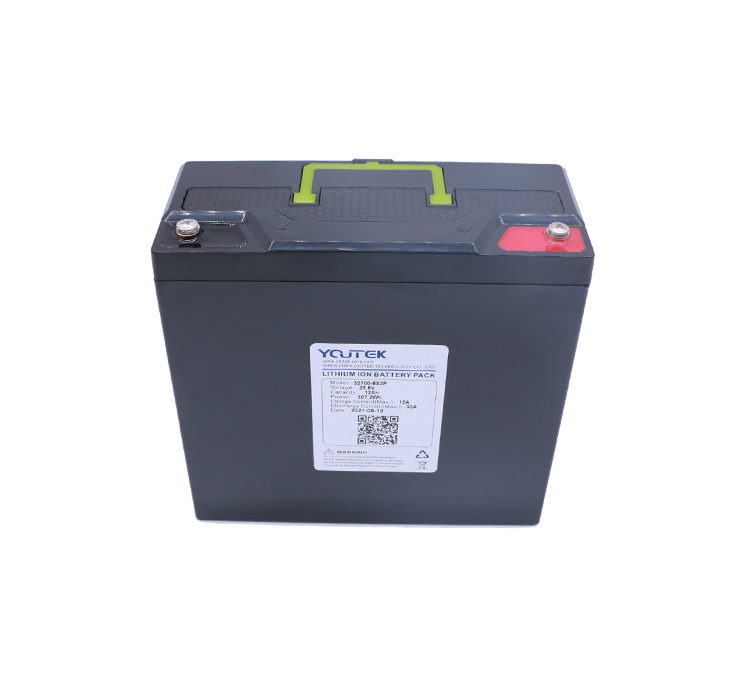The LiFePO4 battery is a lithium-ion battery with lithium iron phosphate LiFePO4 as the positive electrode material and carbon as the negative electrode material. During charging, some of the lithium ions in the lithium iron phosphate are extracted, transferred through the electrolyte to the negative electrode and embedded in the negative carbon material; at the same time, electrons are released from the positive electrode and reach the negative electrode from the external circuit to keep the chemical reaction in balance. During the discharge process, lithium ions are withdrawn from the negative electrode and pass through the electrolyte to the positive electrode. At the same time, electrons are released from the negative electrode and reach the positive electrode from the external circuit to provide energy to the outside world.
The 24V 12Ah LiFePo4 battery has the advantages of high operating voltage, high energy density, long cycle life, good safety, low self-discharge rate and no memory effect.
Introduction of 24V 12Ah LiFePo4 battery
In the crystal structure of LiFePO4, the oxygen atoms are arranged in a hexagonal dense stack. The PO43-tetrahedra and FeO6 octahedra form the spatial framework of the crystal. Li and Fe occupy octahedral voids, while P occupies tetrahedral voids. Fe occupies the homo-angular positions of the octahedra, while Li occupies the homo-angular positions of the octahedra. The FeO 6 octahedra are connected to each other in the bc plane of the crystal, and the LiO 6 octahedra are connected to each other in the b-axis direction to form a chain structure. One FeO 6 octahedron is aligned with two LiO 6 octahedra and one PO43-tetrahedron. The FeO6 co-edge octahedral network is discontinuous and therefore unable to develop electronic conductivity; at the same time, the PO43-tetrahedra limit the volume change of the lattice, affecting Li + deembedding and electron diffusion, resulting in a very low conductivity and ion diffusion efficiency of the LiFePO4 cathode material. The LiFePO4 cell has a theoretical specific capacity of approximately 170 mAh / g and a discharge plateau of 3.4 V. Li + is uncoupled back and forth between the positive and negative electrodes to achieve charging and discharging. During charging, an oxidation reaction takes place. Li + migrates out of the positive electrode and is inserted through the electrolyte into the negative electrode. Iron changes from Fe2 + to Fe3 + and an oxidation reaction takes place.
24V 12Ah LiFePo4 battery structural features
On the left side of the LiFePO4 battery is a cathode made of LiFePO4 with an olivine structure, which is connected to the cathode of the battery by means of an aluminium foil. On the right side is the negative side of the battery made of carbon graphite, which is connected to the negative side of the battery by means of a copper foil. In the middle is a polymer spacer, which separates the positive and negative electrodes. Lithium ions can pass through the spacer, but electrons cannot pass through the spacer. The battery is filled with electrolyte and is sealed by a metal case.
Characteristics of the 24V 12Ah LiFePo4 battery
24V 12Ah LiFePo4 battery has good safety features
The electrochemical properties of the lithium iron phosphate lithium battery cathode material are relatively high and stable, and it is determined to have a stable charge and discharge plateau. Therefore, the structure of the battery will not change during charging and discharging, nor will it burn or explode. It remains safe even under special circumstances such as short-circuiting, over-charging, crushing and pinching.
24V 12Ah LiFePo4 battery long cycle life
The 1C cycle life of LiFePO4 batteries typically reaches 2000 cycles, even more than 3500 cycles.
